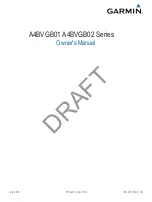
X
X
L
L
D
D
C
C
M
M
A
A
N
N
.
.
d
d
o
o
c
c
3
3
-
-
3
3
7
7
R
R
E
E
V
V
E
E
Press the up or down arrow keys to toggle between "No" and "Yes". When the display shows the
choice you desire, press "FUNC/ENTR". If you choose "yes" this will initiate a warm start. To exit this
function without performing a warm start press the "STATUS" key.
3-180 through 3-196 reserved
SERIAL FUNCTIONS
3-197 GENERAL SERIAL INPUT AND OUTPUT FORMAT
Data may be sent to or requested from the Serial Port by using various function commands and ASCII
character strings. In general, those functions which request status or data fit the form:
F<FUNC#><CR>
where:
F
=
ASCII character F or f
<FUNC#>
=
two-digit function number
<CR>
=
ASCII carriage return character (Hex 0D)
The format for both data input and data output strings is:
F<FUNC#>[<SEP><FIELD>]<LT>
where:
F
=
ASCII character F or f
<FUNC#>
= function
number
<SEP>
=
one or more separator characters; either space, comma or tab
<FIELD>
=
data entry or request
<LT>
=
line terminator, either a carriage return and line feed for output strings or
a carriage return only for input strings
[ ]
=
encloses a phrase that is repeated as often as necessary
Output strings from the Serial Port are kept to fixed lengths whenever possible. This means that
numeric values will often contain many leading blanks. Numeric values are right-justified so that the
least significant digit is always in the same position in the string. Quantities that can be positive or
negative will have a sign even if positive. This is done to simplify the task of programming computer
systems that receive the data. The formats of the output strings are designed so that it is possible to
request the state of a function and save the response string. Later, that string can be sent to the unit to
restore the original state of that function.
Input strings sent to the unit may be of variable length. The number of separators between fields may
be varied. Numeric values may be entered with or without leading zeros. Where a sign is allowed, it
may be omitted for positive quantities. String fields (such as "on" or "off") may be entered in upper or
lower case, as can the "F" that starts all Serial function commands. All commands may be ended with
a carriage return alone, or by a carriage return line feed combination. Some fields of some commands
are optional, and may be replaced by a semicolon. If a field is so replaced, the corresponding value will
be left unchanged.
Содержание 151-600
Страница 2: ...Model XL DC Serial Number__________________ September 15 1997 Revision E...
Страница 4: ......
Страница 27: ...X...













































